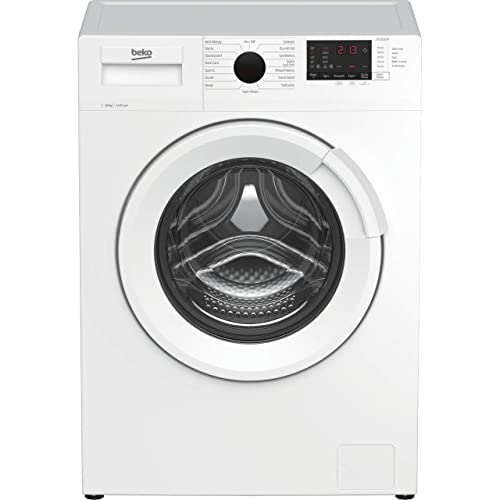Why Buy a 10kg Front Loader?
The front-loader 10kg is ideal for large loads of laundry with 13 wash programs including handwash and plenty of space to accommodate large wash cycles. With advanced technology and smart features, it's the perfect partner for your home laundry.
washersanddryers.co.uk are typically slower to clean, do not come with larger capacities, and are susceptible to mould or mildew. They are more energy- and water efficient than top-loaders.

Energy
The major energy expense of a front loader of 10kg is electricity to heat water to operating temperature and also to run the motor. These costs can be offset by lower operational energy consumption compared with top-loaders, notably less power during the agitation process and during spin, as well as less water. Some machines offer a low-water cycle that uses less water than the cotton cycle. This saves both energy and water.
In general, front-loading washers consume less soap than top-loaders. The drum's tumbling action also reduces foamy suds, and reduces overflows, without affecting the cleaning action. The door seals and bellows on top-loaders are more susceptible to wear. In addition, the top-loader's mechanical agitator can cause considerable wear and abrasion to clothing fabrics, as it forces clothes against each with paddles that constantly drop and drag them through the wash. This abrasion can be measured by the amount fabric that is left on the screen for lint, since lint is mostly composed of stray fibers removed from clothing while washing and drying. To minimize this, a lot of top-loaders are designed to run at a slower speed and might have a "freshening" cycle to clean the bellows and mechanical gears.
Water
Top-loading washers require an impeller or an agitator to force soap and water through the clothes, causing mechanical wear and abrasion. By contrast, front-loaders use paddles that gently lift and lower clothing inside a spinning drum to clean, reducing wear. The amount of lint contained in dryer lint filter can be used to estimate the rate of wear. Lint is largely made up of stray threads which are removed from clothes while washing and drying.
Front-loading machines are less prone to leak due to a lower water level than top-loaders. True front-loaders might require a bellows or seal to prevent water from flowing out of the open door during operation, but these systems usually do not need to be maintained in the same way as those on top-loaders.
Front-loaders are less energy-intensive than top-loaders, as they can utilize hot or cold water and some do so without a heating source. This efficiency could reduce operating costs for the same laundry load in places where energy, water and detergents are expensive.
